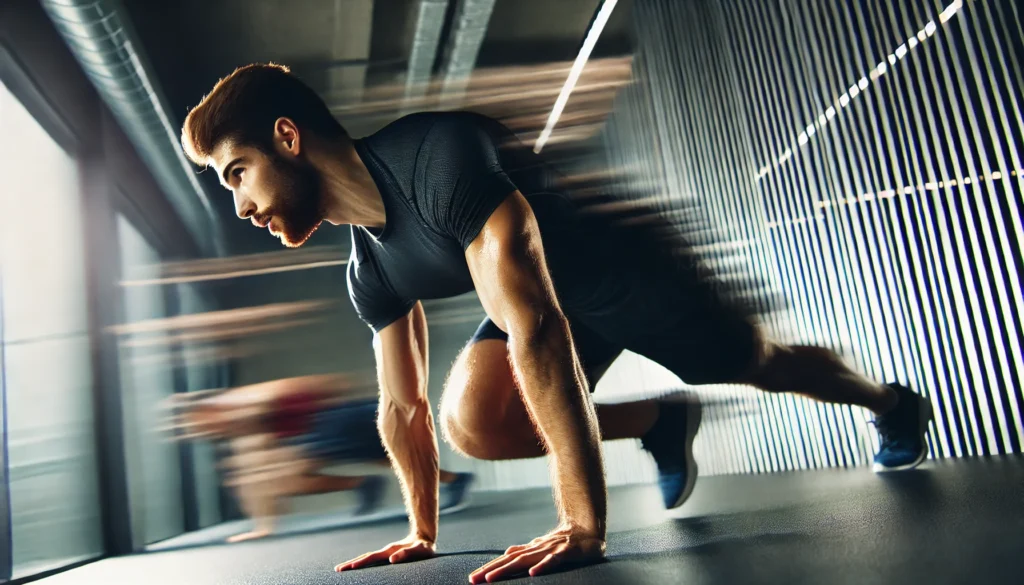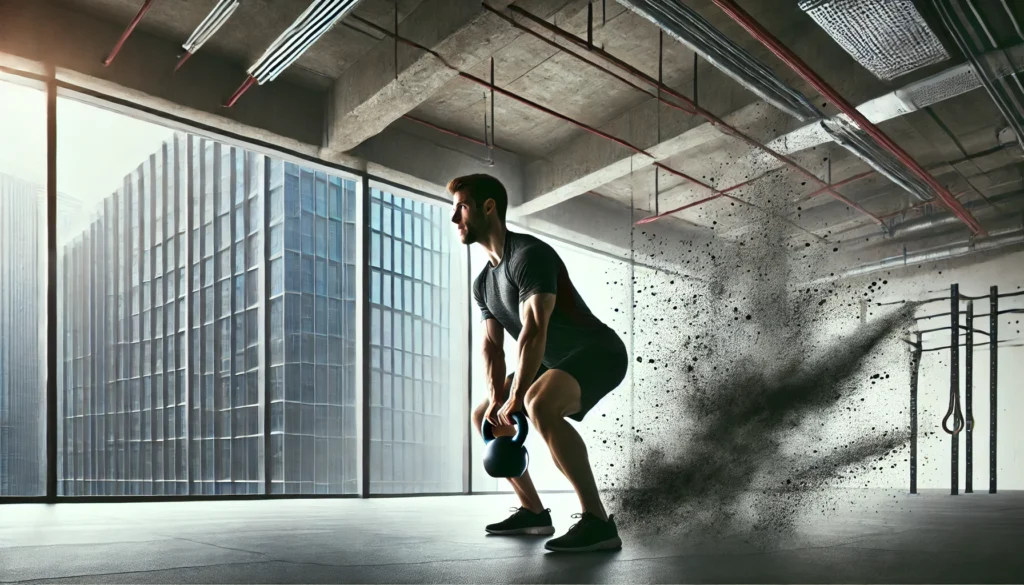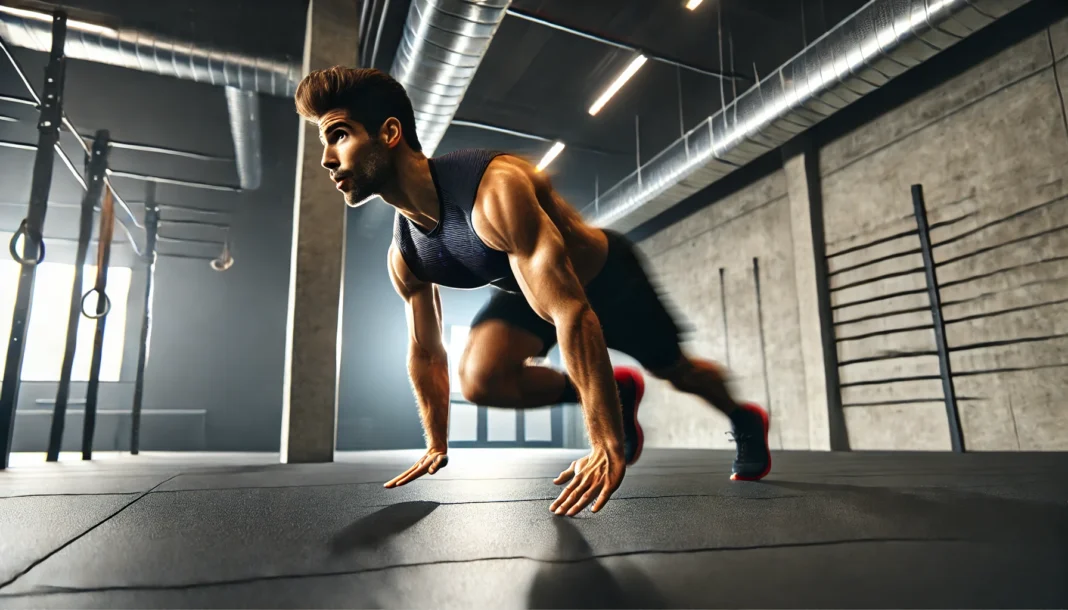Introduction: The Importance of Quick and Effective Workouts at Home
In today’s fast-paced world, finding time for fitness can be challenging. However, with the right approach, quick workouts can be just as effective as longer training sessions, making it possible to build strength and endurance without dedicating hours at the gym. The best exercises for home fitness are designed to maximize efficiency while targeting key muscle groups, ensuring that every movement contributes to overall health. By integrating good home exercises into daily routines, individuals can enhance physical fitness, boost energy levels, and promote long-term well-being. Whether you are a beginner exploring how to start exercising at home or an experienced fitness enthusiast seeking advanced training strategies, understanding different kinds of workout exercises is key to optimizing results.
You may also like: The Ultimate Bodyweight Workout Routine for Full-Body Strength and Performance
The Science Behind Quick Workouts: Efficiency and Effectiveness
Many people assume that longer workouts yield better results, but research indicates that shorter, high-intensity sessions can be just as effective. High-intensity interval training (HIIT), for example, has been shown to improve cardiovascular health, increase calorie burn, and build muscle in a fraction of the time required for traditional workouts. Incorporating workout exercises at home into a structured routine ensures that even the busiest individuals can maintain fitness. Engaging in the best home fitness workout requires understanding how to balance intensity, recovery, and variety to prevent plateaus and sustain progress. Quick effective workouts emphasize compound movements that recruit multiple muscle groups, maximizing calorie expenditure and muscle activation in minimal time.
How to Get Fit at Home for Beginners: A Step-by-Step Guide
For those new to fitness, understanding how to get fit at home for beginners requires a strategic approach. The first step is to establish a routine with basic exercises that focus on fundamental movement patterns, such as squats, push-ups, and planks. These movements form the foundation of great home exercises, promoting strength and stability while reducing the risk of injury. Gradually increasing intensity and incorporating different workout moves ensures continued progress. The key to success in working out at home is consistency—regular practice leads to noticeable improvements in strength, endurance, and overall well-being. Additionally, incorporating recovery techniques, such as stretching and mobility drills, supports long-term performance.
Different Kinds of Workout Exercises for Maximum Impact
A well-rounded fitness routine should include a mix of strength, cardio, flexibility, and balance training. Strength training exercises, such as lunges and push-ups, develop muscle tone and endurance. Cardiovascular exercises, including jumping jacks and mountain climbers, elevate heart rate and improve metabolic efficiency. Flexibility training, such as yoga and dynamic stretching, enhances range of motion and prevents injuries. Balance exercises, such as single-leg stands and stability drills, improve coordination and posture. Combining these different kinds of workout exercises into a structured plan ensures comprehensive fitness development. By tailoring each session to individual goals, individuals can optimize performance and long-term health.
The Best Home Fitness Workout for Strength and Conditioning
Designing the best home fitness workout requires a balance of compound and isolation exercises that target various muscle groups. Squats, deadlifts, and push-ups are among the best exercises for building strength with minimal equipment. To increase intensity, incorporating resistance bands or household items, such as water bottles or backpacks, can mimic gym-based resistance training. Bodyweight exercises, such as planks and burpees, engage the core while improving endurance. Structuring a workout with a combination of high-rep, low-rest sets enhances cardiovascular benefits while supporting muscle growth. Home workout ideas should focus on movement quality and progressive overload to maximize results.

Quick Exercises to Boost Fitness Levels
For those seeking fast results, incorporating quick exercises into daily routines can significantly improve fitness levels. Exercises you can do at home, such as jumping squats, push-ups, and bicycle crunches, deliver a full-body workout in just minutes. These movements enhance coordination, flexibility, and cardiovascular endurance while promoting muscle activation. The fastest workout for strength and endurance involves combining explosive movements with controlled repetitions to challenge both fast-twitch and slow-twitch muscle fibers. The efficiency of quick easy workouts lies in their ability to maintain workout intensity without requiring excessive time commitment. By focusing on high-energy movements, individuals can maintain consistency even on the busiest days.
Home Workout Ideas for Long-Term Success
Sustaining motivation in working out at home requires variety and adaptability. Rotating between different exercise modalities, such as circuit training, yoga, and plyometrics, prevents monotony and encourages continuous improvement. Understanding how to exercise in the house effectively involves optimizing space, scheduling consistent workouts, and tracking progress. Integrating top workouts to do at home into weekly routines ensures balanced muscle development and improved overall fitness. Creative home workout ideas, such as stair climbs, wall sits, and isometric holds, add excitement while challenging muscle endurance. By prioritizing consistency and variety, individuals can build lifelong fitness habits.

Frequently Asked Questions (FAQ) on Quick and Effective Home Workouts
1. What are the best exercises for maximizing fitness with quick workouts?
The best exercises for quick workouts target multiple muscle groups while maintaining a high level of intensity. Compound movements like squats, lunges, and push-ups are excellent because they engage the entire body and boost cardiovascular endurance. For those looking for good home exercises, adding plyometric movements such as burpees and jump squats can further enhance calorie burn and athletic performance. Resistance-based workout exercises at home, such as isometric holds and dynamic planks, improve strength without requiring weights. The key is to create a workout structure that alternates between strength and endurance exercises for maximum efficiency.
2. How can I design the best home fitness workout for strength and endurance?
The best home fitness workout should integrate both cardiovascular endurance and strength training. One effective method is to perform a circuit that combines different kinds of workout exercises, such as bodyweight squats, push-ups, mountain climbers, and core-focused planks. Each move should be performed at high intensity with minimal rest to maximize efficiency. Cool exercises to do at home include agility drills like lateral shuffles and resistance band exercises that mimic weight training. By structuring sessions around compound movements and short bursts of high-intensity effort, individuals can build strength and endurance simultaneously.
3. What are the easiest exercises for beginners who want to get fit at home?
For beginners wondering how to get fit at home for beginners, starting with the easiest exercises ensures proper technique and builds confidence. Basic exercises like bodyweight squats, knee push-ups, and standing calf raises help develop foundational strength. Adding simple mobility drills such as arm circles and hip openers improves flexibility and reduces the risk of injury. Home workout ideas for beginners should focus on slow, controlled movements to establish correct form before progressing to more complex routines. Gradually incorporating workout moves like lunges and incline push-ups enhances endurance while maintaining safety.
4. How can I make quick effective workouts part of my daily routine?
Incorporating quick effective workouts into daily life requires strategic planning and consistency. One strategy is to perform micro-workouts throughout the day, such as five-minute core-focused exercise moves in the morning or a short circuit of good workout exercises at home before dinner. Setting a designated workout time, whether morning or evening, helps create a habit of regular training. For those pressed for time, the fastest workout routines consist of compound movements performed at high intensity. By structuring home workout ideas around brief but powerful sessions, individuals can maintain fitness with minimal disruption to their schedule.
5. What are some cool workouts to do at home that keep exercise interesting?
To prevent workout boredom, cool workouts to do at home should incorporate variety and creativity. Dance-based workouts, shadowboxing, and animal flow movements add a dynamic element to training. Circuit-style workouts combining resistance exercises, bodyweight drills, and agility-focused drills maintain engagement and motivation. Another approach is to experiment with different training methods, such as Tabata, pyramid sets, or AMRAP (as many reps as possible) challenges. Adding a fun element, such as competing against personal bests or incorporating interactive fitness apps, keeps workouts fresh and exciting.
6. How can I achieve the best training at home without equipment?
The best training at home without equipment relies on maximizing bodyweight exercises and movement efficiency. Incorporating variations of common exercises, such as elevated push-ups or one-legged squats, increases intensity. Utilizing household objects, such as water bottles for resistance or chairs for dips, enhances the range of possible movements. Different kinds of workout exercises, including static holds like planks and explosive movements like jumping lunges, ensure balanced development. For those looking for easy fast workouts, high-rep, bodyweight circuits provide an excellent alternative to traditional gym-based strength training.
7. How can I create a fast and effective full-body workout using just bodyweight exercises?
A fast and effective full-body workout can be designed by selecting exercises that engage multiple muscle groups simultaneously. A session might include exercises such as push-ups, squats, jump lunges, and plank variations, performed back-to-back with minimal rest. The key to a quick easy workout is maintaining intensity while focusing on proper form. Exercises you can do at home should be adjusted to include modifications or progressions to match individual fitness levels. By keeping rest periods short and exercise selections diverse, individuals can build strength, endurance, and mobility in one efficient session.
8. What are some top workouts to do at home that improve overall fitness?
The top workouts to do at home involve a combination of functional strength, endurance, and mobility training. A solid routine might consist of squats, push-ups, mountain climbers, burpees, and core exercises such as Russian twists. Adding in flexibility movements, such as yoga poses or dynamic stretching, helps maintain joint health and reduces muscle tightness. Engaging in quick exercises focused on high-intensity interval training (HIIT) maximizes calorie burn and cardiovascular health. By consistently switching between strength and endurance exercises, individuals can improve overall fitness and adaptability.
9. What are the benefits of working out at home compared to a gym?
Working out at home provides convenience, flexibility, and cost savings while eliminating commute time and gym fees. The best home fitness workout can be personalized to suit individual goals and preferences without waiting for equipment or dealing with distractions. Home-based training also encourages creativity by allowing individuals to explore different workout moves and routines tailored to their specific needs. Additionally, for those wondering how to exercise in the house, utilizing available space efficiently ensures that workouts remain effective. The key advantage of great at home workouts is that they can be customized to align with daily schedules and fitness objectives.
10. How can I measure progress when doing quick workouts at home?
Tracking progress in quick workouts requires setting measurable goals and monitoring performance over time. Recording the number of repetitions completed, increasing intensity by reducing rest time, or improving form and range of motion are all indicators of progress. Using fitness apps or keeping a workout journal helps maintain accountability and track improvements in strength and endurance. For those engaging in basic exercises, setting small milestones such as increasing plank duration or achieving more push-ups ensures continuous motivation. By regularly assessing performance, individuals can adjust their routines to maintain progress and prevent stagnation.

Conclusion: Achieving Fitness and Strength at Home
Home-based workouts offer a convenient and effective way to build strength, improve endurance, and maintain overall health. By incorporating quick effective workouts into daily routines, individuals can achieve substantial fitness gains without requiring gym access. The best training at home focuses on efficiency, movement variety, and progressive challenge to ensure continuous improvement. Whether engaging in basic exercises or exploring advanced workout moves, the key to success lies in consistency and adaptation. With the right approach, anyone can develop a sustainable home fitness routine that supports long-term health and well-being.
home fitness strategies, strength training at home, bodyweight exercises, functional fitness training, HIIT workouts, movement efficiency, core strengthening, endurance training, fitness motivation, time-efficient workouts, home workout planning, fitness progression, dynamic movement training, optimal workout routines, full-body conditioning, resistance training methods, flexibility and balance exercises, metabolic conditioning, energy-boosting exercises, sustainable fitness habits.
Further Reading:
9 At-Home Workout Plans for Building Muscle, Strength & Fat Loss
10 Home Strength Training Exercises Without Equipment
30 Moves to Make the Most of Your At-Home Workout
Important Note: The content provided by HealthXWire is for informational purposes only and should not be construed as medical advice, diagnosis, or treatment. While we strive for accuracy, the information presented on this site may not reflect the most current research or medical guidelines. Always seek the advice of your physician or other qualified health provider with any questions you may have regarding a medical condition. HealthXWire does not endorse, recommend, or guarantee the efficacy of any products, services, or treatments mentioned on this site. Users should not disregard professional medical advice or delay seeking it because of something they have read on HealthXWire. HealthXWire is not liable for any damages, loss, or injury arising from reliance on the information provided herein.



